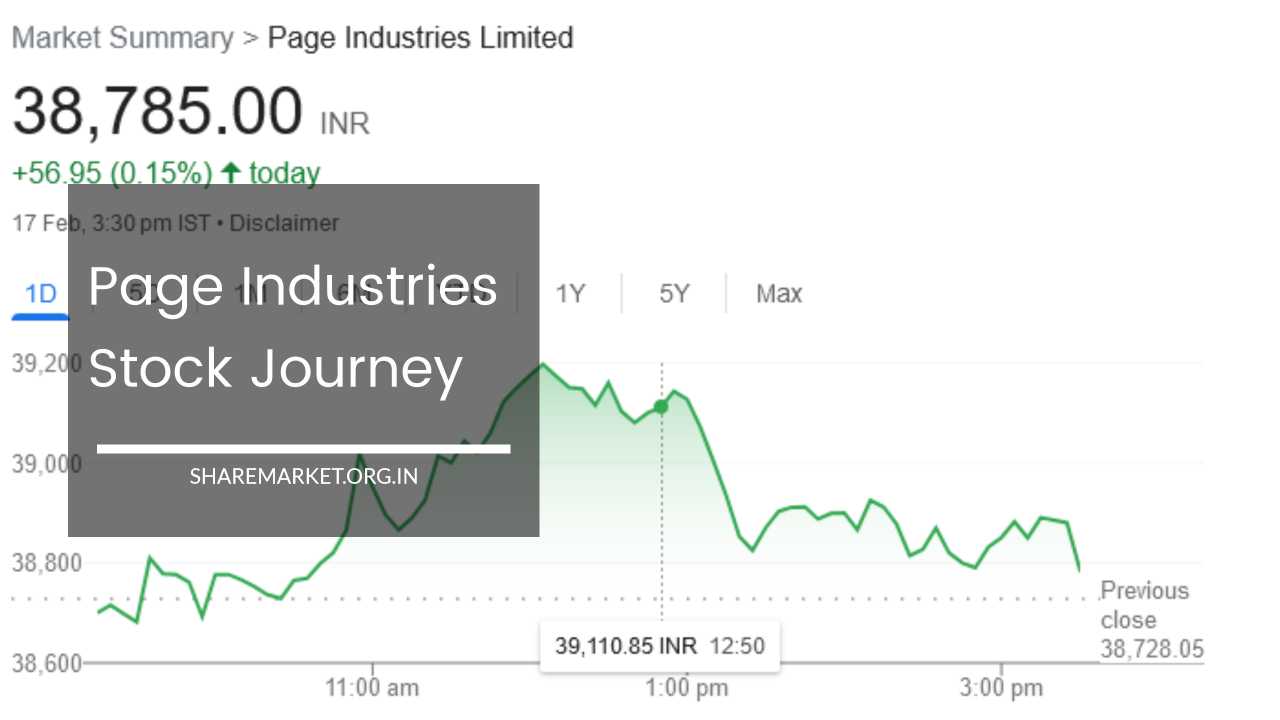How to Invest Money in Share Market

How to Invest Money in Share Market
Beginner’s Guide to Stock Market Investing
When venturing into the world of investing in the share market, particularly as a beginner, it’s important to understand the dynamics of the market.
One key aspect to consider is the existence of two primary types of share markets: the primary market and the secondary market.
The primary market is where companies issue new shares to the public for the first time through processes like Initial Public Offerings (IPOs) or Follow-on Public Offerings (FPOs).
In the primary market, companies raise capital by selling their shares directly to investors. This is an opportunity for companies to generate funds that can be utilized for various purposes such as business expansion, research and development, debt reduction, or acquisitions.
As an investor participating in the primary market, you have the chance to buy shares directly from the issuing company, allowing you to become an initial shareholder.
On the other hand, the secondary market is where previously issued shares are traded among investors. The secondary market is commonly associated with stock exchanges, where investors buy and sell shares that have already been issued in the primary market.
This is where most of the trading activity takes place. Investors can buy shares from other investors who are willing to sell, and sell their shares to other interested buyers.
The secondary market offers liquidity, allowing investors to enter or exit their positions in a particular stock based on their investment strategies and market conditions.
As a beginner, it’s important to understand the distinction between the primary and secondary markets.
While the primary market provides an opportunity to invest in new shares directly from the issuing company, the secondary market enables you to trade shares that are already in circulation.
Both markets have their own set of risks and rewards, and it’s crucial to conduct thorough research, analyze market trends, and consider your investment goals and risk tolerance before engaging in any investment activity.
Additionally, it’s advisable to educate yourself about the various investment strategies, market indicators, and company fundamentals that can help inform your investment decisions.
Seeking guidance from experienced investors or financial advisors can also provide valuable insights and help you navigate the complexities of the share market more effectively.
Investing in the Primary Share Market
To participate in the primary share market, investors typically engage through an Initial Public Offering (IPO). During an IPO, companies collect applications from interested investors and allocate shares based on the demand and availability.
To invest in both the primary and secondary markets, it is essential to have a Demat account, which securely holds electronic copies of your shares.
Additionally, a trading account is also crucial as it enables the buying and selling of shares online.
In certain cases, traders may have the option to apply directly from their bank accounts. This process is facilitated through Application Supported by Blocked Amount (ASBA).
When utilizing the ASBA process, if an investor applies for shares worth, let’s say, ₹1 lakh, the funds equivalent to that amount will be temporarily blocked in their bank account.
Once the shares are allotted, the exact amount required for the allotted shares will be debited from the bank account, and any remaining balance will be released. All IPO applications are typically required to adhere to this protocol.
After the shares are allocated to investors, they are listed on the stock exchange, and trading in those shares can commence within approximately one week.
Having a Demat account and a trading account streamlines the process of investing in both the primary and secondary markets, providing investors with the necessary infrastructure to participate in the share market.
These accounts facilitate the electronic storage of shares and allow investors to seamlessly trade in the stock market.
It’s important to note that before investing, one should conduct thorough research, evaluate their risk appetite, and consider expert advice to make informed investment decisions.
Investing in the Secondary Share Market
Investing or trading in the secondary share market involves the regular buying and selling of shares or stocks. Before you begin your journey in the secondary share market, there are a few straightforward steps to follow.
These steps will help you navigate the process with confidence:
1. Open a Trading Account: To participate in the secondary share market, you’ll need to open a trading account with a reputable financial firm. This account will serve as a platform for executing your buy and sell orders.
2. Choose a Stockbroker: Select a reliable stockbroker who can facilitate your transactions in the secondary market.
Consider factors such as brokerage fees, customer service, research tools, and trading platforms when choosing your stockbroker.
3. Complete the Account Opening Process: Fill out the necessary application forms and submit the required documentation to open your trading account.
This typically includes identity proof, address proof, and bank account details. The financial firm will verify your information before activating your account.
4. Fund Your Trading Account: Deposit funds into your trading account to have the necessary capital for buying shares. You can transfer funds from your bank account to your trading account using the provided instructions.
5. Perform Market Research: Before investing in the secondary share market, it’s important to conduct thorough market research.
Analyze the financial performance and prospects of different companies, study market trends, and stay informed about economic indicators that may impact the share prices.
6. Develop an Investment Strategy: Define your investment goals, risk tolerance, and time horizon. Based on these factors, create a well-thought-out investment strategy.
Determine the types of shares or stocks you wish to invest in and the approach you will take—whether it’s long-term investing or short-term trading.
7. Place Buy and Sell Orders: Once you have identified the shares you want to invest in, place your buy orders through your trading account.
Specify the quantity, price, and any additional conditions for your order. Similarly, when you want to sell your shares, place sell orders accordingly.
8. Monitor and Evaluate: Regularly monitor the performance of your investments and stay updated with market news and events. Evaluate your investment decisions periodically and make adjustments to your portfolio as needed.
Remember, investing in the secondary share market involves risks, and it’s crucial to exercise caution and make informed decisions.
Stay updated with market trends, seek advice from financial experts if needed, and continuously enhance your knowledge about investing to improve your chances of success.
Documents Required for Opening a Demat/trading Account
When opening a Demat/trading account, you will typically be required to submit the following documents:
1. Proof of Identity (PoI): You need to provide a copy of any one of the following documents as proof of your identity:
– Aadhaar Card
– Passport
– Voter ID Card
– Driving License
– PAN Card
2. Proof of Address (PoA): You need to provide a copy of any one of the following documents as proof of your address:
– Aadhaar Card
– Passport
– Voter ID Card
– Driving License
– Utility bills (electricity bill, telephone bill, gas bill) issued within the last three months
– Bank account statement or passbook with the latest entries (not more than three months old)
3. Passport Size Photographs: You will need to provide a few passport-sized photographs, usually ranging from two to four, as per the requirements of the account opening process.
4. PAN Card: You are required to provide a copy of your PAN (Permanent Account Number) Card, which serves as a unique identifier for tax purposes.
5. Bank Account Details: You will need to provide your bank account details, including the bank name, branch, account number, and IFSC code.
This information is necessary for linking your trading account with your bank account for seamless fund transfers.
6. Know Your Customer (KYC) Form: You will be required to fill and sign a KYC form provided by the brokerage or financial institution. This form captures your personal information, financial details, and investment preferences.
It’s important to note that specific requirements may vary depending on the brokerage or financial institution you choose.
It’s advisable to check with the respective institution or consult their website for the most accurate and up-to-date information regarding the documents required for opening a Demat/trading account.
Factors To Consider Before Making Share Market Investment
Before making a stock market investment, there are several important factors to consider. These factors can help you make informed decisions and mitigate risks. Here are some key factors to consider:
1. Financial Goals: Determine your financial goals and investment objectives. Are you investing for short-term gains or long-term wealth accumulation? Clarifying your goals will help you select the appropriate investment strategy.
2. Risk Tolerance: Assess your risk tolerance level. Stocks inherently involve risks, including market volatility and potential loss of capital.
Evaluate your comfort level with fluctuations in the stock market and ensure that your investment aligns with your risk tolerance.
3. Research and Analysis: Conduct thorough research on the company or companies you plan to invest in.
Consider factors such as the company’s financial health, earnings growth, competitive advantage, management team, and industry trends. Use tools and resources to analyze stock performance and make informed investment decisions.
4. Diversification: Diversify your investment portfolio to spread risk. Investing in a variety of stocks across different industries or asset classes can help minimize the impact of a single stock’s performance on your overall portfolio.
5. Market Conditions: Stay updated on market trends and conditions.
Monitor economic indicators, interest rates, geopolitical events, and other factors that can influence stock prices. Understanding market conditions can help you make informed investment decisions.
6. Time Horizon: Consider your investment time horizon. Stocks are generally considered long-term investments, and short-term market fluctuations may not significantly impact long-term investors.
Align your investment strategy with your time horizon and avoid making impulsive decisions based on short-term market movements.
7. Financial Analysis Tools: Utilize financial analysis tools and ratios to evaluate stocks. These tools can help you assess a company’s valuation, profitability, liquidity, and other key financial metrics.
Examples of commonly used tools include price-to-earnings ratio (P/E ratio), earnings per share (EPS), and return on equity (ROE).
8. Professional Advice: Seek professional advice from financial advisors or investment professionals.
They can provide personalized guidance based on your financial situation, goals, and risk tolerance. Professional advice can help you make well-informed investment decisions.
9. Regular Monitoring: Continuously monitor your investments and stay updated on company news, financial reports, and market developments.
Regularly review your portfolio’s performance and make necessary adjustments based on changing market conditions or your financial goals.
Remember, investing in the stock market carries risks, and there are no guarantees of returns.
It’s crucial to do your due diligence, stay informed, and make investment decisions based on careful analysis and consideration of these factors.

















